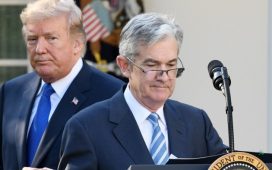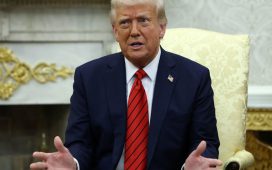Receive free US economy updates
We’ll send you a myFT Daily Digest email rounding up the latest US economy news every morning.
Another tediously pointless, economically debilitating and teeth-gratingly stupid US government shutdown is looming.
Goldman Sachs now reckons that there is now a 90 per cent chance it starts this Sunday, and has published a report on the implications. Here are the bank’s main points, with Alphaville’s emphasis below:
— A government shutdown this year has looked likely for several months, and we now think the odds have risen to 90%. The most likely scenario is a shutdown starting Oct. 1. While there is still a chance that Congress can reach a last-minute deal to extend funding past Sep. 30, there has been little progress made and there is little time left. In the seemingly unlikely event Congress passes a short-term extension, we would still expect a shutdown sometime later in Q4.
— We continue to think a shutdown would last 2-3 weeks. If the government shuts down on Oct. 1, a quick reopening looks unlikely as political positions become more deeply entrenched. Instead, political pressure to reopen the government is likely to gradually build. In particular, pay dates for active-duty military (Oct. 13 and Nov. 1) could be potential pressure points, as well as possible deterioration in “essential” operations like airport screening and border patrol as workers go unpaid.
— We have estimated a shutdown would subtract 0.2pp from Q4 GDP growth for each week it lasts (adding the same to 1Q2024, assuming it has ended by then). Regardless of duration, federal employee furloughs should subtract 0.15pp for each week of shutdown. We have estimated the indirect private sector hit at 0.05pp per week, but this is likely to be smaller in a short shutdown, and larger in protracted shutdown lasting many weeks.
— We expect all data releases from federal agencies to be postponed until after the government reopens, except for releases from the Federal Reserve, which does not rely on congressional funding.
— Although we would expect the shutdown to end after 2-3 weeks, more than one shutdown is possible. The two parties are far apart on spending proposals, and any agreement to reopen the government after the likely shutdown is likely to expire before year-end, potentially risking another funding lapse.
If you didn’t roll your eyes hard at “more than one shutdown is possible” then you must be a serving member of Congress. If you are not but still want to find out more about this asinine US tradition, then Goldman has made the entire US debt ceiling Q&A report public here.






